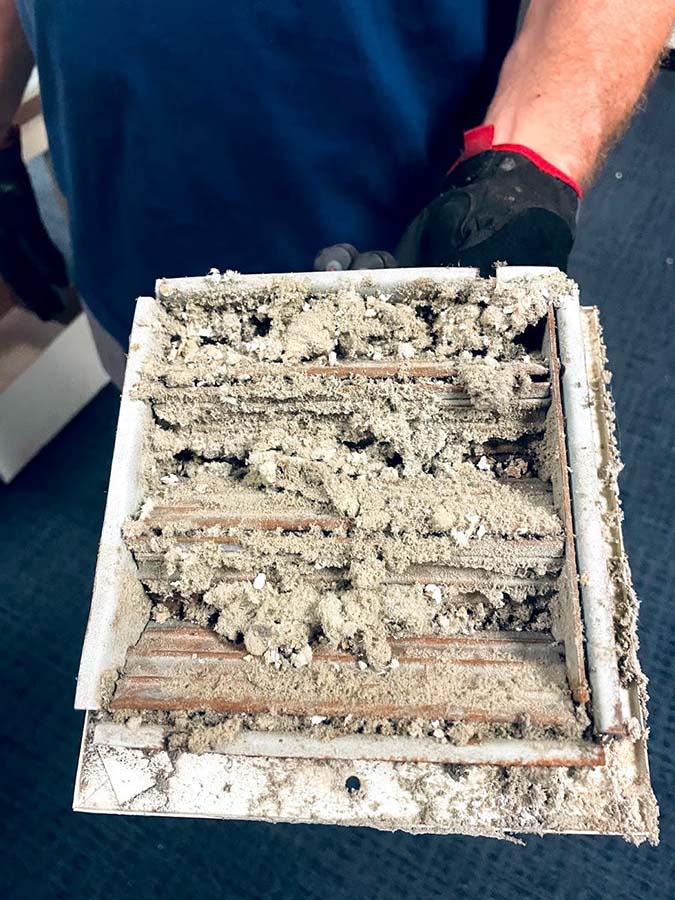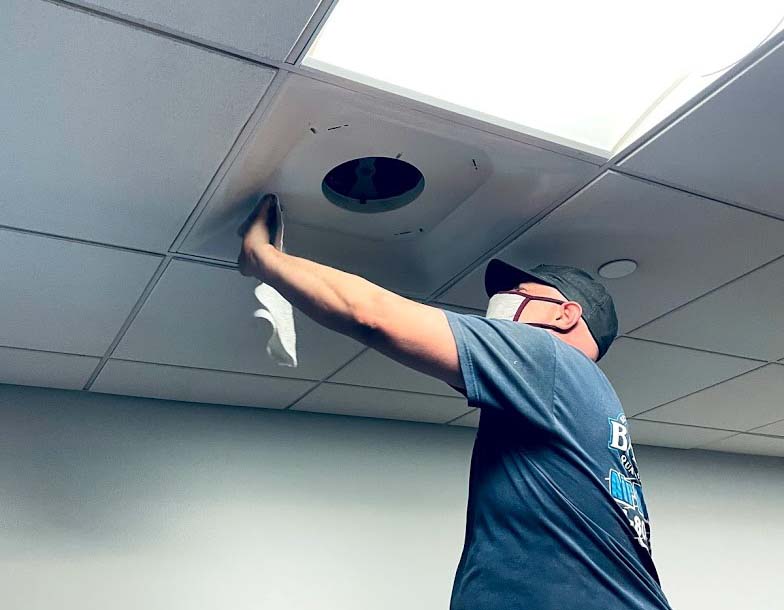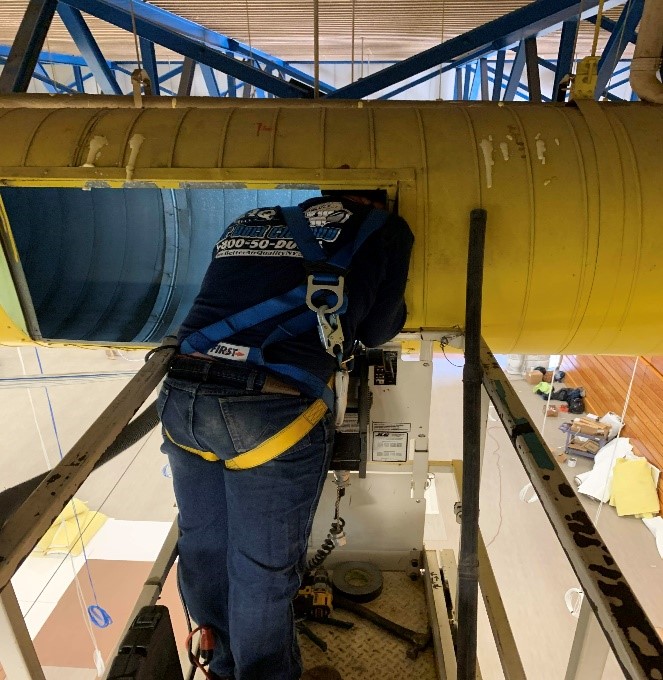A move into duct-cleaning work is natural for HVAC contractors looking to expand their repertoire and add another source of revenue.
The ability to clean ductwork and peer inside it via video cameras, which are used by many cleaning firms to document their work, can help technicians see an HVAC system from a different perspective and diagnose problems that might not otherwise be apparent.
And while all ductwork is prone to buildups of dirt and debris over time, David Richardson of the National Comfort Institute (NCI) said that dirty ducts can sometimes indicate a larger problem with the HVAC system or the ductwork itself, such as kinks in flexible ducts, improperly sized ducts, undersized filters, or dirty blower wheels.
“The knowledge of duct cleaning opens many doors to correct those problems,” said Richardson, who is the director of NCI’s technical curriculum. “It helps a contractor to look beyond the equipment.”
Technical curriculum director, National Comfort Institute
‘They Want Clean Air’
“Use duct cleaning as a way to increase your equipment change-outs, sell upgraded filtration, UV lights, and any other indoor air quality products you offer,” said John Kovacs, vice president of sales at Rotobrush International, a manufacturer of duct-cleaning equipment. “Remember, your customer doesn’t (just) want clean air ducts — they want clean air.”

CAKED OVER: Removing layers of dust and debris, like that seen on this grille, is the duct cleaner’s first job. But cleanings can sometimes uncover performance problems in an HVAC system. (Courtesy of Jim Castellano / Better Air Quality)
Though cleaning ducts is often associated with HVAC work, Richardson said that not all contractors are sold on it. Some embrace it, while other don’t want any part of it, he said.
Richardson, who was once a contractor himself, is among the duct-cleaning believers.
“To ignore the fact that ducts get dirty is, in my opinion, negligent of our industry,” he said. At NCI, which offers resources and training for HVAC professionals, the goal is to have technicians look at what’s going on in the ductwork and how it might affect the performance of the entire system, Richardson said.
Kovacs and Richardson said HVAC contractors can create good entry-level jobs by adding a duct-cleaning service; Kovacs pointed out it can also be a way to keep experienced technicians busy during slower times of the year.
Professional Resources
Jim Castellano, the president of Better Air Quality, a Long Island-based company that specializes in commercial duct-cleaning and other indoor air-quality projects in the greater New York City area, said interested contractors should start by attending a National Air Duct Cleaners Association (NADCA) technical conference in order to get a feel for the business. There, they can get a look at the latest cleaning equipment and talk to the manufacturers, he said. (The next NADCA technical conference is in September in Atlantic City, New Jersey.)

ON THE JOB: A Better Air Quality employee on this job has duct access through a ceiling panel. The company does commercial work in the New York City metropolitan area. (Courtesy of Jim Castellano / Better Air Quality)
“It’s a good way of finding out what your initial investment is going to be,” said Castellano, who is the NADCA treasurer and is active on several NADCA committees.
NADCA, he said, offers resources and the opportunity to exchange ideas with top people in the industry.
“There a lot of intelligent people at NADCA, and there’re a lot of HVAC people at NADCA,” Castellano said. “It really does help bring you along. You’re always learning something.”
NADCA also certifies trained air systems cleaning specialists and certifies ventilation inspectors.
Similarly, the Grapevine, Texas-based Rotobrush also has resources for cleaners, including video training, follow-up video conferencing, and around-the-clock technical support.
Equipment Investment
Rotobrush makes portable equipment for cleaning and inspecting ductwork and clothes-dryer vents, including vacuum systems and video cameras. About 75% of Rotobrush customers are HVAC companies, Kovacs said; the rest either offer duct cleaning alone or as part of a menu of building restoration services.

SHINE A LIGHT: A Better Air Quality technician gets an up-close look at the large ductwork in this gymnasium job in the New York City area. (Courtesy of Jim Castellano / Better Air Quality)
Contractors adding duct cleaning, Kovacs said, typically spend between $5,000 and $15,000 as an initial investment. A contractor aiming to do commercial jobs, he said, should expect to spend more on equipment than one who plans to stick to residential work.
Castellano, who worked for another duct-cleaning company before striking out on his own, said it’s important to not cut corners. “The shortcut eventually ends up biting you,” he said.
“People do want to see value, so don’t cut corners,” said Scott Getzschman, a part-owner with brothers Ron and David, of Getzschman Heating, which serves Omaha, Nebraska, and surrounding communities.
Better Air Quality, in addition to cleaning ductwork, also does air-quality testing, mold remediation, and coil cleaning and sanitizing.
“If we see something that’s not exactly correct we let an HVAC contractor know,” said Castellano, adding that he works from a list of contractors he recommends.
At Getzschman, however, problems uncovered during cleaning work can be solved in-house. The company, founded in 1960, offers a full range of HVAC services; duct cleaning was added, along with other IAQ products and services, in 1994.
Finding Profit, ‘Unique Things,’ in Ducts
Cleaning ducts and other IAQ work is a profitable part of the business, Scott Getzschman said, in addition to giving the company opportunities to service entire systems.
Getzschman said cleaners can find some “unique things” in ductwork in addition to dirt. Among them: toys, food, rodents, and construction materials, he said.
NCI’s Richardson said that among HVACR contractors he’s familiar with, fewer than 10% offer duct-cleaning services. However, he sees growing interest among contractors in cleaning ducts — and waning interest as well.
“You’ll see as many contractors get out of it as get in,” Richardson said.
Those that get out of it have sometimes failed to find profit in it, have gotten busy with other work, or have taken a related tangent, such as installing bolt-on IAQ products, or selling equipment-replacement and equipment-maintenance agreements, Richardson said.
“They simply stopped doing duct cleaning and let their machines sit,” he said.



Report Abusive Comment